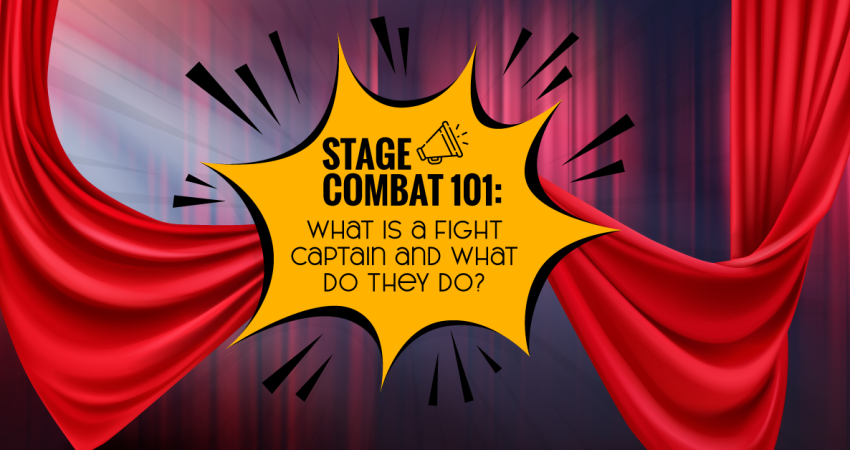A battle captain is a vital part of the artistic team. They are a cast member who assists the fight director and helps keep the fight choreography on stage during the performance. They are responsible for making battle calls (more on that below) and maintaining safety throughout the process. Normally, a Battle Director selects a Battle Captain, but as the teacher of your students, you know your students best and are the best resource for identifying a suitable student for the role and communicate this information to the combat director.
The role of battle captain is best suited to a senior or more experienced theater student who is trustworthy, mature, looking for a challenge and interested in movement and choreography. They need to have a smaller role in the show or as a whole – it’s too much extra responsibility for a lead actor. The combat captain could also be a member of the stage management team.
Responsibilities of the combat captain include:
1. Attending every rehearsal where the fights are taught and rehearsed. They must be familiar with all the stage fight choreography in the show. This includes filming and scoring all the choreography so that they have an accurate record of the work. They may not modify or teach the choreography, but they can and should review the moves under supervision.
2. Making a battle call before every show. A fight call is a mini-rehearsal in which every fight in the show is rehearsed twice before show time – once at half speed and once at performance speed, with all the necessary costumes, lighting effects and weapons. With stage management and the director, the fight captain will need to ensure that there is enough time before each performance for a fight call, warm-ups, donning the costume and any other tasks that need to take place before curtain.
3. Ensuring that any stage combat weapons are serviced, clean and ready for use prior to each performance. After each performance, the combat captain checks that each weapon is returned, undamaged and properly stored. All stage combat equipment must be kept closed when not in use in the performance.
4. Ensuring the stage is cleared of debris and swept/molded as required. A member of the stage management team often completes this task, but it is up to the combat captain to ensure that it is completed.
5. Acts as a liaison if there are issues that need to be addressed, such as a weapon malfunction or an injury that requires a choreography adjustment. If there is a problem that the Battle Captain or Director cannot resolve, the Battle Director should be contacted.
The Battle Captain may have additional duties as assigned, such as conducting physical warm-ups, conducting third-person shots and other battle effects, and conducting safety checks (such as providing safety mats and other equipment).
If you have a student who is particularly excited about stage combat, taking on the important role of battle captain would be a great opportunity for them. They will get to learn a lot, get extra credit for their resume and develop their leadership skills while having a lot of fun.
Click here for a free printable tip sheet and exit questions.
Kerry Hishon is a director, actor, writer and stage fighter from London, Ontario, Canada. She blogs at www.kerryhishon.com.
Want to learn more about our newest pieces, resources, and giveaways?
Get on our list!

